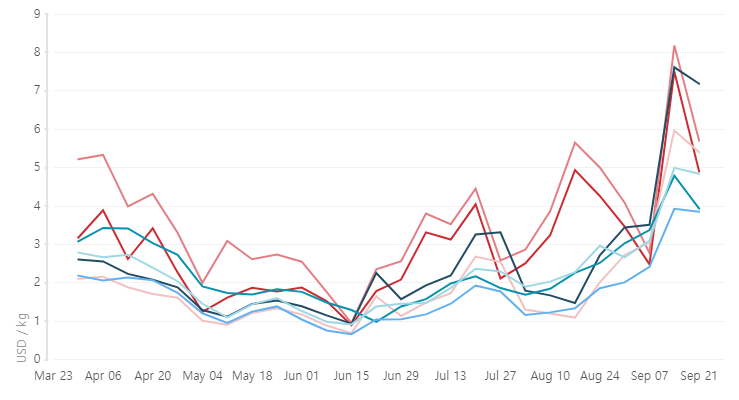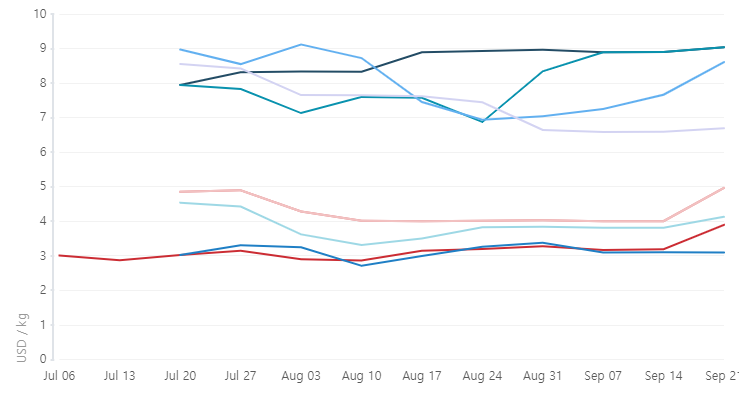South Korea Suffers from Severe Tomato Shortage
After a series of unusually long summer rains and typhoons in 2020 that lasted from late June to mid-August, South Korea is currently experiencing a vast shortage of tomatoes as natural disasters hit the country’s main tomato producing region of Kangwon. According to Tridge’s price data, after witnessing a drop in prices on July 27th, domestic prices of tomatoes rose by 78.5% in the second-to-last week of September, signifying a massive increase.

Domestic Tomato Prices in South Korea. Source: Tridge
Record Summer Rains Bring Price Surge
Top main fast-food chains such as McDonald’s, Burger King, and Lotteria are currently having trouble providing tomatoes for their burgers. Lotteria, one of the three major burger corporations in Korea, has been giving customers discounts of ₩300 - 600 (USD 0.26 - 0.51) (₩300 per slice) to the customers that order burgers with tomatoes. According to the Seoul Agro-Fisheries & Food Corporation, the average price for 10kg specialty tomatoes was at approximately ₩66,086, 1.49 times more expensive than prices last year. Prices of low and medium-sized tomatoes also saw increases of 1.79 to 2.15 times higher than last year’s prices.

Domestic Tomato Prices in Japan. Source: Tridge
South Korea’s Dependence on Domestic Supply
The effects of the rains were aggravated by South Korea’s dependence on domestic tomatoes, making it hard to promptly secure new import destinations. Neighboring country Japan which was also impacted by the storms saw relatively steady prices without any abnormal surges. Unlike South Korea, Japan imports its tomatoes from various regions including Europe and the Americas, which would have made its domestic supply less vulnerable compared to its Korean counterparts. Currently, phytosanitary restrictions for South Korea only allow the import of tomatoes from Japan (excluding Yonaguni island). It is predicted that it will be at least November before the supply is normalized in South Korea, as stocks in the country’s second-largest tomato producing region Jangsu, Jeonbuk province are added to the market.
Sources


